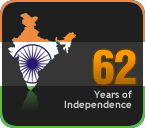Almost all of the early civilizations in the world had the Sun as the God.
They all believed that Sun is the eternal truth and his(and in some regions it is her) power lead the universe and all other creatures.
So let us know some facts and forms in which the Sun is called and named across all the civilizations.
 Sun God at the Konarak temple in Orissa
Sun God at the Konarak temple in OrissaIn the Sanskrit Vedas, numerous hymns are dedicated to Surya/Mitra dev, the Sun personified, and Savitr, "the impeller", a solar deity either identified with or associated with Surya.
Even the Gayatri mantra, which is regarded as one of the most sacred of the Hindu hymns is dedicated to the Sun. The Adityas are a group of solar deities, from the Brahmana period numbering twelve. The ritual of sandhyavandanam, performed by some Hindus, is an elaborate set of hand gestures and body movements, designed to greet and revere the Sun.
Even the Gayatri mantra, which is regarded as one of the most sacred of the Hindu hymns is dedicated to the Sun. The Adityas are a group of solar deities, from the Brahmana period numbering twelve. The ritual of sandhyavandanam, performed by some Hindus, is an elaborate set of hand gestures and body movements, designed to greet and revere the Sun.
 Wall hanging representation of Sun God according to the Hindu religion
Wall hanging representation of Sun God according to the Hindu religionThe Sun God in Hinduism is an ancient deity, worthy of immense worship. The Sun is referred to in Sanskrit as "Mitra" or "Friend" down to the invariable warmth, life-giving nature and optimism its light brings to mankind. He is called "Prati-Aksh Devta" meaning "The Seen Divinity" and worthy of much worship and reverence.
 The famous Wheel of the Aditya Rath at the Sun temple in Orissa
The famous Wheel of the Aditya Rath at the Sun temple in OrissaThe Mahabharata describes one of its warrior heroes Karna as being the son of the righteous queen Kunti and the Sun. The Ramayana has its protagonist Rama as being descended from the Surya Vansh or the clan of kings as bright as the Sun.
The Sun God is said to married to the beautiful goddess Ranaadeh, also known as Sanjnya. She is depicted in dual form ("jor"), being both sunlight and shadow, personified. The goddess is revered heavily in Gujarat and Rajasthan.
The charioteer of Surya is Arun, who is also personified as the redness that accompanies the sunlight in dawn and dusk.
The Sun God is said to married to the beautiful goddess Ranaadeh, also known as Sanjnya. She is depicted in dual form ("jor"), being both sunlight and shadow, personified. The goddess is revered heavily in Gujarat and Rajasthan.
The charioteer of Surya is Arun, who is also personified as the redness that accompanies the sunlight in dawn and dusk.
 The winged sun was an ancient (3rd millennium BC) symbol of Horus, later identified with Ra
The winged sun was an ancient (3rd millennium BC) symbol of Horus, later identified with RaIn India, at Konark, a town in Orissa, a temple is dedicated to Surya. The Konark temple has also been declared a UNESCO world heritage site. Surya is the most prominent of the navagrahas or nine celestial objects of the Hindus. Navagrahas can be found in almost all Hindu temples. There are further temples dedicated to Surya, one in Arasavilli, Srikakulam District in AndhraPradesh, one in Gujarat and another in Rajasthan. The temple at Arasavilli was constructed in such a way that on the day of Radhasaptami, the sun's rays directly fall on the feet of the Sri Suryanarayana Swami, the deity at the temple.
 The Trundholm sun chariot pulled by a horse is believed to be a sculpture illustrating the sun, an important part of Nordic Bronze Age mythology
The Trundholm sun chariot pulled by a horse is believed to be a sculpture illustrating the sun, an important part of Nordic Bronze Age mythologyChhath (Hindi: छठ, also called Dala Chhath) is an ancient Hindu festival dedicated to Surya, the chief solar deity, unique to Bihar, Jharkhand and the Terai. This major festival is also celebrated in the northeast region of India, Madhya Pradesh, Uttar Pradesh, and parts of Chhattisgarh.Hymns praying to the sun can be found in the Vedas, the oldest sacred texts of Hinduism. Practiced in different parts of India, the worship of the sun has been described in the Rigveda.


























